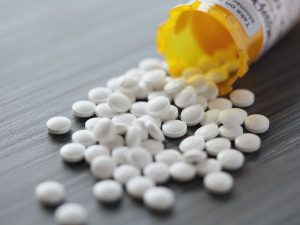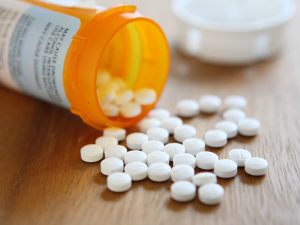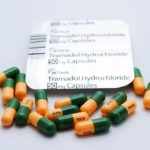Oxycodone is one of the most abused opioids in the United States with research showing that about 75% of opioid users prefer Oxycodone. With its highly addictive potential, withdrawal from the substance can be extremely painful and challenging especially when an extreme amount has been used over a long period.
It will take about 8 to 24 hours after the last dose for the withdrawal symptoms to occur. These can typically last for a week, however; some may continue to linger up to a year or two. Long-term withdrawal symptoms are very common among those who used the substance excessively for recreational use.
Timeline for Oxycodone Withdrawal
 Whether a person used the drug as directed by the physician or not, withdrawal symptoms can occur as long as it has been consumed for several weeks. When it comes to opioid prescription, a physical dependence can happen very easily in a couple of days and when this happens, the body will struggle with the absence of the substance in the bloodstream.
Whether a person used the drug as directed by the physician or not, withdrawal symptoms can occur as long as it has been consumed for several weeks. When it comes to opioid prescription, a physical dependence can happen very easily in a couple of days and when this happens, the body will struggle with the absence of the substance in the bloodstream.
Although some individuals who have no history of opioid use may only experience mild withdrawal symptoms, other factors such as gender, weight, health condition, and medical history may also contribute to the degree of withdrawal one must endure. For a safer and more manageable detox, it is best to seek the guidance of medical experts upon treatment.
The following timeline may guide individuals who are worried about what may likely happen as soon as they start their withdrawal treatment. Although symptoms may vary from person to person, it can be helpful to condition the mind about the possible circumstances during treatment so that loved ones may also be aware of the kind of support they can extend.
Day 1 to 2
A person is prone to sweat more than usual and appears to be restless or agitated. With the sudden changes of dopamine levels in the brain, the primary impact would be on a person’s mood. Some may find themselves less likely to engage with what used to be fun and feel despair. Anxiety may also start to kick in while others may feel irritable about a few things.
These episodes may accompany physical symptoms such as muscle pain and headache. Fatigue can also be experienced and this can totally wear a person down. And when one fails to nourish themselves enough due to a loss of appetite, the body could suffer even more. Nausea and vomiting can also be expected during the first two days.
Other occurrences may include dilated pupils, leaking tears, and a runny nose. Some individuals may also experience rapid breathing. It is also important to note that cravings at the onset of the treatment could be very strong. Some give in to taking the substance to relieve pain. This is why relapse could be very common at this phase.
Day 3 to 5
 During these days, the symptoms could swing up to their peak. Most people would describe this time frame as the occurrence of the worst symptoms. Individuals may see themselves intensely shaking and may feel cramps all over their joints. Nausea and vomiting may continue to progress, making the body extremely weak.
During these days, the symptoms could swing up to their peak. Most people would describe this time frame as the occurrence of the worst symptoms. Individuals may see themselves intensely shaking and may feel cramps all over their joints. Nausea and vomiting may continue to progress, making the body extremely weak.
Some medications are prescribed to diminish the degree of withdrawal symptoms a person can experience. Long-acting opioids such as Methadone and Buprenorphine can substitute the function of Oxycodone without instilling a euphoric high. This can be greatly helpful for the body to cope with the absence of short-acting Oxycodone.
While these treatments work in reducing the intense cravings for the substance which is the usual cause for relapse and failed detox treatment, prescriptions must be constantly monitored by a qualified physician to ensure the safety and effectiveness of the medication. These medicines may pose harmful threats if not properly used.
Day 6 to 7
 While the physical symptoms are likely to decline by this time, psychological symptoms also begin to heighten, and this can be a very challenging phase among individuals. Experiencing depression can lead to suicidal attempts and if not carefully attended to, the outcome could be fatal. Once the signs are detected earlier, interventions can also be given right on time.
While the physical symptoms are likely to decline by this time, psychological symptoms also begin to heighten, and this can be a very challenging phase among individuals. Experiencing depression can lead to suicidal attempts and if not carefully attended to, the outcome could be fatal. Once the signs are detected earlier, interventions can also be given right on time.
Moreover, anxiety may progress extremely during this phase, and medication is a great option to help one cope with these psychological problems. Benzodiazepines, for instance, work best to treat anxiety, however; this must be given with a prescription. Patients’ response to these drugs must also be clinically assessed, that’s why it is best to work with a doctor.
Nausea and diarrhea will continue to persist by the end of the first week of withdrawal. Loperamide can be given to treat diarrhea while Ondansetron can work out nausea and vomiting. Apart from these drugs, a proper diet and staying dehydrated can work a lot in helping the body cope with the difficulties of the treatment.
Week 2 and onwards
By this time frame, the substance, Oxycodone, is expected to have been fully flushed out from the bloodstream, however; this is not a guarantee that symptoms will no longer persist. Experts even emphasize that occasions of relapse could be again, intense at this point because some patients may look back and feel the guilt of the things they have done.
This remorse can lead people to feel so down that they may think about shutting off their feelings by taking the substance again. This occasion can be prevented by engaging actively in therapy which strengthens an individual’s coping skills to get back to the old bad habit. It is also important to identify underlying triggers to relapse through the therapy.
Keep in mind that some symptoms may linger up to two years that is why a long-term treatment can be beneficial. Group therapy, counseling, and a healthy lifestyle are highly effective measures to keep one’s disposition motivated and determined to achieve full recovery regardless of how long it takes.
Overall, Oxycodone withdrawal needs to be medically supervised because it makes the symptoms more tolerable, plus it has a high success rate. Working with professional specialists can guarantee the safety of the treatment as well.













